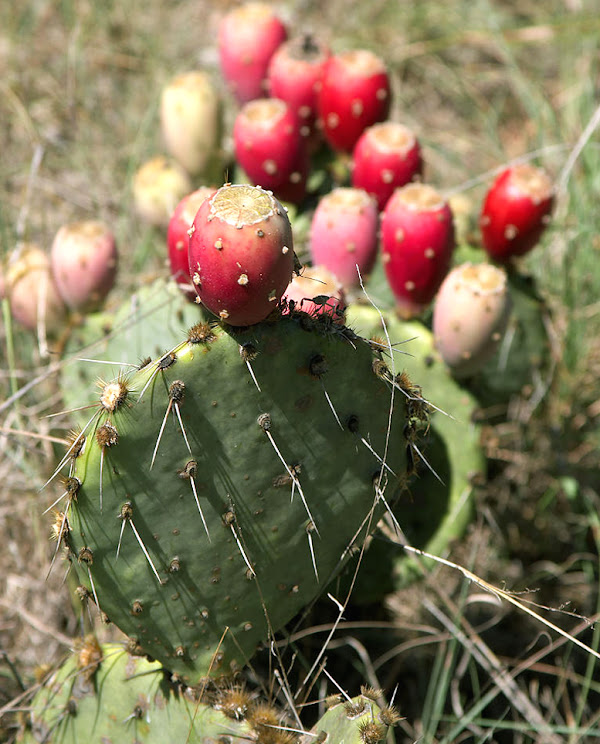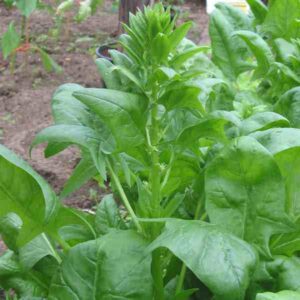Cactus farming is not too common or popular. But it can be a good business for making profits, and commercial cultivation of cactus is gaining popularity gradually. Because, it’s very easy and simple to start and operate a cactus farming business.
Opuntia is a genus in the cactus family, Cactaceae. The cactus is also known by many other different names in different parts of the world. It’s most common name is prickly pear. But it is also known by some other names such as opuntia, tuna fruit, sabra, mopal, paddle, paddle cactus etc.
The genus ‘Opuntia’ is named for the Ancient Greek city of Opus, where, according to Theophrastus, an edible plant grew and could be propagated by rooting it’s leaves. The most common culinary species is the Indian fig opuntia.
However, purposeful cultivation of cactus is called cactus farming. And today it is becoming a good and profitable business idea in the agribusiness sector.
There are actually many uses of the edible cactus plant (which is known as Opuntia, Prickle pear or Prickly pear). That’s why commercial cactus farming business can be profitable.
The cactus plants can be grown in almost everywhere. It is a xerophytic plant and it has the ability to grow in severe water scarcity conditions. And this ability of these plants is the major reason for becoming the cactus farming popular in recent years.
What is Cactus
Before discussing more about the starting process of cactus farming, let us explain more about cactus.

- Cactus is actually a xerophytic plant that can grow up to a height of 16-23 feet.
- The edible parts of the cactus plants are either modified leaves or flowers.
- The large pods are green to blue-green, bearing few spines up to 1 inches or may be spineless.
- The prickly pears generally grow with flat, rounded cladodes (also called platyclades) containing large smooth, fixed spines and small, hairlike prickles called glochids that readily adhere to skin or hair, then detach from the plant.
- The flowers are typically large, axillary, solitary, bisexual, and epiperigynous, with a perianth consisting of distinct, spirally arranged tepals and a hypanthium.[1]
- The stamens are numerous and in spiral or whorled clusters, and the gynoecium has numerous inferior ovaries per carpel. Placentation is parietal, and the fruit is a berry with arillate seeds.
- Prickly pear species can vary greatly in habit; most are shrubs, but some, such as Opuntia echios of the Galápagos, are trees.
- Leaves of the cactus plants are known as crowns. And the crowns can grow with a width up to 10 feet and the diameter may vary up to 3 feet.
- Mostly indigenous cactus plants have thorns or spines on it’s leaves. Although, there are some exotic varieties of cactus that are thornless.
- The cactus are used for many different purposes. It is used as a source of food for humans as well as fodder or forage food for cattle.
Cactus As Human Food
There are many health benefits of eating cactus, and it acts as a good source of food for humans. In many countries around the world, the cactus is used as human food in many different ways.
In Mexico, the prickly pears are often used in making soups, salads, bread, appetizers, beverages, desserts, jelly, candy and cactus drinks too. There are even some famous food outlates that serve cactus recipes.

The young steps of the cactus plants (which are callded Nopales) are also edible. And those nopales are used like a vegetable. Nopales can be used in cooking curries, salads and other recipes.
Cactus As Fodder Crop
Cactus are often fed to cattle, as they have a lot of nutritional value. It is a good forage crop for many farmers who are doing farming in drought prone areas or arid to semi-arid climate conditions.
You can grow cactus as a fodder crop and fed your animals when green fodder is limited or not available, especially during the summer season (when high temperature along with water scarcity threaten food security in many regions around the world).
Cactus acts as a good nutritional fodder for many farm animals such as horses, sheep, buffaloes etc.
In some areas, farmers can’t grow fodder crops like Napier grass, fodder maize or paddy. Because all these plants require huge quantities of water to produce crops. Cactus farming can be a good idea in such areas. Because the cactus plants require very little amount of water and the costs are very less.
Nutritional Benefits of Cactus
Prickly pears are a great source of food for humans. It is very nutritious and there are many health benefits of eating cactus. And the cactus is eaten in many different ways around the world.
Raw opuntia leaves are 88% water, 10% carbohydrates and less than 1% both of fat and protein. In a 100-g reference amount, raw leaves provide 41 calories, 17% of the Daily Value (DV) for vitamin C, and 24% DV for magnesium, with no other micro nutrients in significant content (table).

However, here we are shortly describing about the top health benefits of consuming cactus.
- As you know, obesity is a global epidemic, and the cactus has the potential role in weight control. Prickly pear fruit contains fiber that will make you feel full for longer and reduce hunger pangs.
- The prickly pear fruits can also help in reducing the cholesterol levels in the blood. It’s fiber content can be held responsible for this as it helps eliminate LDL cholesterol from the body.
- Cactus is a source of essential micronutrients such as Vitamin C, Vitamin B6, folate, iron, riboflavin, niacin, calcium, magnesium and potassium.
- The flavonoid compounds in prickly pear lower the risk of breast, prostate, stomach, pancreatic, ovarian, cervical, and lung cancers.
- Prickly pear exerts a positive effect on the gastric mucosa, and this activity is mainly facilitated by a compound called betanin found in this fruit.
- The ingestion of this fruit or its extract can lower high blood glucose levels as well as maintain normal levels.
- Regular consumption of prickly pears smooths the stomach. It helps to maintain a healthy digestive system and prevents constipation.
- Consuming prickly pear as a juice or in the form of jams or jellies is very helpful for preventing liver damage. It contains plenty of antioxidants that can reduce the oxidative stress caused by such compounds on the liver. It exerts hepatoprotective activity that mainly involves eliminating free radicals and increasing the body’s antioxidant activity against these compounds.[2]
- The prickly pear fruits have the ability to reduce the effects of a hangover.
- Regular consumption of cactus works as immune system booster.
- The prickly pear is rich in potassium, and it helps in lowering the blood pressure. And the fruit is very good for heart.
- The cactus is very effective for keeping your skin healthy.
- The cactus is actually a very nutritious food. Along with the above mentioned benefits, it has also many other health benefits. You can include this to your regular diet.
Advantages of Cactus Farming Business
We have learned about the top health benefits of cactus. Now we will discuss about the advantages of starting commercial cactus farming business. Here we are shortly describing about top advantages of prickly pear cultivation business.

- Cactus farming is not an old or too common farming business idea. It is relatively a new business idea. And there is a huge scope for cactus farming business.
- It is very easy to start cactus farming business. The plants generally require less caring and other management.
- If you learn about propagation, maintenance, packaging and marketing of cactus and cactus fruits, then it will be very easy for you to manage this business.
- Many new and existing farmers are entering into this business, as it is very lucrative.
- The cactus plants generally require less caring and the plants can grow in almost everywhere.
- The plants are able to thrive in severe water scarcity. So, you can start this business in the areas where water crisis is a regular problem.
- Cactus or prickly pear fruits are relatively new in the fruit market. But people are becoming conscious about the health benefits of these fruits. So, we can expect good demand and price of the fruits.
- And as an uncommon fruit, you can expect to have high market value of the fruits.
- Commercial cactus farming can be a good business idea for the unemployed educated youths. And it can be a good employment source.
- Caring requirements are less and the production costs are also very less. So, you will be able to start this business with relatively less capital.
- Although production costs are less, but the output is very good.
- As you know, consuming prickly pear fruits regularly has many health benefits. So, cactus farming can be a great way to enjoy this fruit.
How to Start Cactus Farming
Knowing about the advantages of cactus farming, many individuals and small scale entrepreneurs are entering into this business.
Cactus farming is relatively easy and simple. The plants generally require less caring and other management. You only need to start growing cactus is a branch or leaves of the cactus plants.
The leaves are to be planted at a depth of 2-2.5 inches below the soil. And within a few days, the propagated plant grow into a new plant.

There is actually no need for investing land preparation. Because these plants require very less quantity of water and maintenance. And these plants can be grown well in almost all types of soils.
You just follow some steps for starting cactus farming business. And these steps are propagation, planting, maintenance, harvesting and marketing. Here we are shortly describing about all these steps.
Propagation
Select the available edible prickly pear/opuntia plants near your field. Cut the leaf of that plant, or some flat leaves and sow them in your farm.
And within a few days, it will produce new plants and flowering also starts as soon as the plant attains it’s vegetative phase.
There are also some tissue culture techniques to produce some varieties of cactus plants.
Planting
The cactus plants are generally grown in two methods. They are planted either in rectangular rows or in diagonal rows. Both methods are beneficial for cactus farming.
You can also grow cactus as a fence in the field that serves as a border fence crop which prevents the entry of vertebrates pests into the main field.
In addition, you may also go for mixed alley or intercropping systems in farm which is also a beneficial farming system.
Caring
The cactus is an easy caring plant. It generally require less caring and maintenance. It is a xerophyte and doesn’t require much water to grow.
Although you can use drip irrigation system to get harvest cactus in less time. Pests and diseases are less in the cactus plants. So, there is no need for any spraying of chemicals.
Harvesting
Harvesting is done when the plant attains a height of 4 to 6 meters. Harvest the flattened leaves and do pack the leaves immediately after harvesting. Immediate packing is important in order to prevent the loss of shelf life of the leaves.

The shelf life of the cactus leaves is comparatively higher than other crops.
Pack the flat leaves in plastic containers or wrap the flat leaves with polythene and place them in plastic tray or crates.
Marketing
Market demand of cactus is increasing gradually. There are some food outlets that purchase cactus leaves or prickly pears. Initially, you can target those outlets for marketing your products.
Such outlets serve various juices and salads made from cactus leaves and fruits which are becoming famous nowadays as it is healthy in having cactus in our regular diet.
And there are also some processing industries that process cactus leaves for medicinal purpose. There are also some pharmaceutical industries that purchase cactus from the farms.
These are the common steps and ways for starting and operating a successful cactus farming business. Hope this guide has helped you! Good luck & may God bless you!
Frequently Asked Questions
People ask many questions about cactus farming. Here we are trying to list the most common questions about this exceptional business, and trying to answer them. Hope you will find your answer. Don’t hesitate to ask us if you have more questions.
Are cactus farms profitable?
Yes, cactus farming is a profitable business. The cactus plants require less caring and management and growing them is very easy. Cactus is used in many different purposes, so commercial production can be profitable.
Can cactus be farmed?
Yes, cactus can be farmed for making profits. Cactus is a xerophytic plant that has the ability to grow in severe water scarcity conditions. And cactus farming is also known as Prickle Pear farming. Commercial production of cactus is gaining popularity.
How do you make a cactus farm?
Making a cactus farm and starting production is relatively easy.First of all you have to select a good land for your business, then plant the seedlings, water and fertilize them and finally you can start harvesting cactus.
Which country is famous for cactus?
Mexico has the greatest number and variety of species. The only cacti possibly native to the Old World are members of the genus Rhipsalis, occurring in East Africa, Madagascar, and Sri Lanka.
How much does a 12 foot cactus cost?
Exact price can vary from place to place. Please visit your nearest market for updated price.
How fast can you grow a cactus?
Depends on the cactus variety. Yearly growth of the cactus can vary from 3cm to 15m.

How much is a full grown cactus worth?
Depends on the variety. The price can vary from $15 to $400 depending on the variety.
Is cactus high maintenance?
No, cactus is a low-maintenance plant.
Which habitat is best for cactus?
The cactus plants thrive best in arid and dry environments.
Can cactus grow in just rocks?
No, the cactus plants can’t grow in rocks alone.
Can cactus grow in only sand?
Yes, most of the cactus will grow in only sand. But cactus grow best in well-drained sandy soil.
Which country eats the most cactus?
Mexico is the largest cactus producing and consuming country.
How long can a cactus live?
A cactus plant can live for hundreds of years.
What is the fastest growing cactus?
Echinopsis terscheckii is the fastest growing cactus.
How tall is a 100 year old cactus?
By 95-100 years in age, a saguaro cactus can reach a height of 15-16 feet, and could start to produce its first arm. By 200 years old, the saguaro cactus has reached its full height, reaching upwards of 45 feet tall.
What fertilizer is good for cactus?
Organic fertilizer is good for cactus.
How much water does a cactus need?
The cactus require very less amount of water. Watering the plants once a week will be enough.
How often do you water a cactus?
Watering the plants once a week will be enough.
Which cactus is rarest?
Discocactus subterraneo-proliferans is the rarest cactus plant.
Does cactus need a lot of sun?
Yes, they need plenty of sun. Generally, most cacti species need at least 4-6 hours of sunlight to thrive.
Can cactus survive in heavy rainfall?
Depends on the cactus variety. Many cactus species can survive the rain, even heavy and prolonged falls while others can rot very quickly when exposed to too much rain.
Can cactus be eaten raw?
Depends on the variety. The edible variety can be eaten raw or cooked.
Is aloe vera a cactus?
No, aloe vera and cactus are of two different family.
Is cactus good for House?
Both Vastu and Feng Shui experts suggest that cacti, although pretty, can transmit bad energy at home.
How long does it take for a cactus to produce fruit?
Prickly pears should start fruiting within 3-4 years from transplanted cuttings.







Hi
Do you perhaps have the costs involved in this type of farming, specially input costs and output costs. And the also more specific to the breakdown of these calculations.
regards
Where are you from? Please try to contact with some existing farmers in your area. Good luck!
I was thinking to start a spineless cactus farm in Turkey because I think it would benefit animal farmers and people as well.if you have more information about cactus farming or someone I can contact,it would be greatly appreciated.
Hi, I come from Southern Greece (Koroni) where I have land with Olive trees. I live in Cyprus where the climate is even warmer and land rent is easy. I have grown up by underestimating this cactus. In fact we were destroying them. But now I am interested to leave behind business expansion for others (i develop the market of a startup at the moment) and work for myself and be happier (hopefully). The question always is not only how to make the product but where to sell the product. A good product without a customer is nothing. So I would like some ideas how to find customers that need not only fruits but use leafs as a material, in order to keep a profitable business. If you can contact me at [email protected] I would appreciate it.
Thanks for this great overview. Would love to see the economics of this and the input costs, outputs costs, and labor.
We receive too much rain throughout the year. Is it possible to grow this plants in our area?
Probably no. Thanks for your interest.